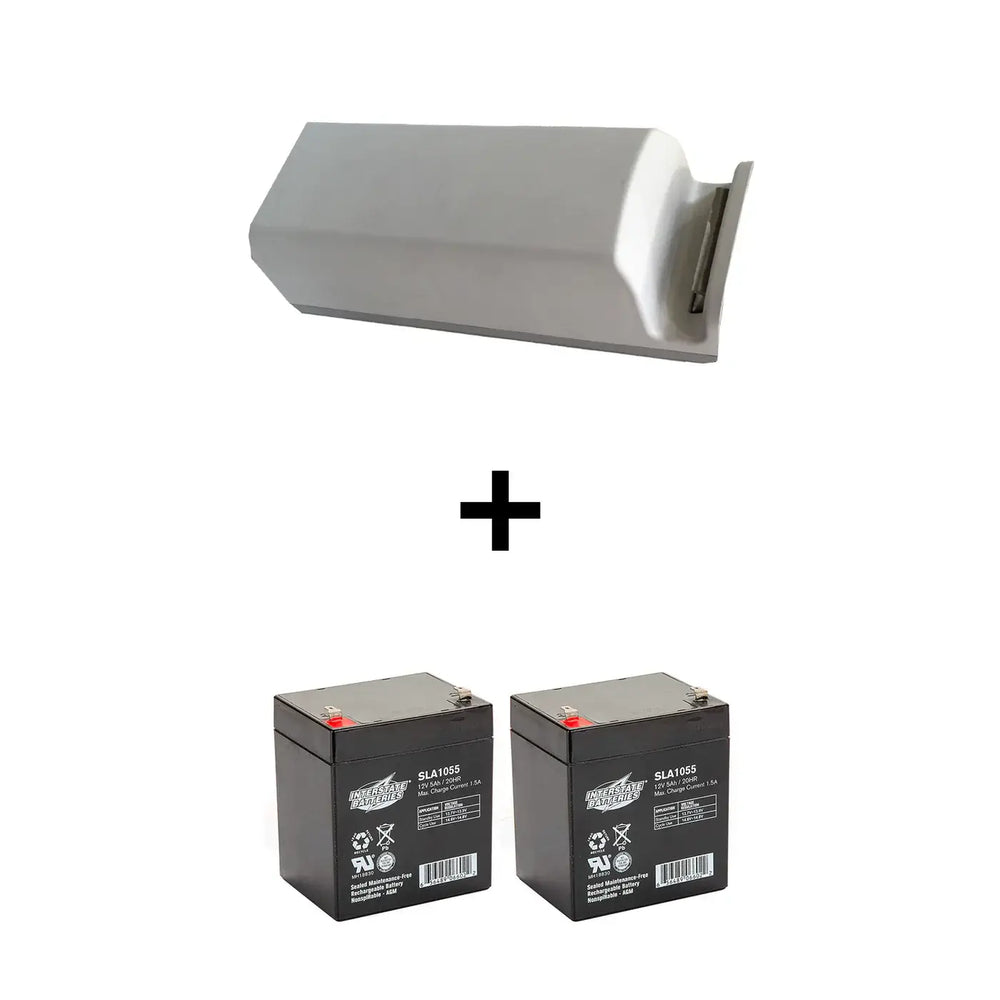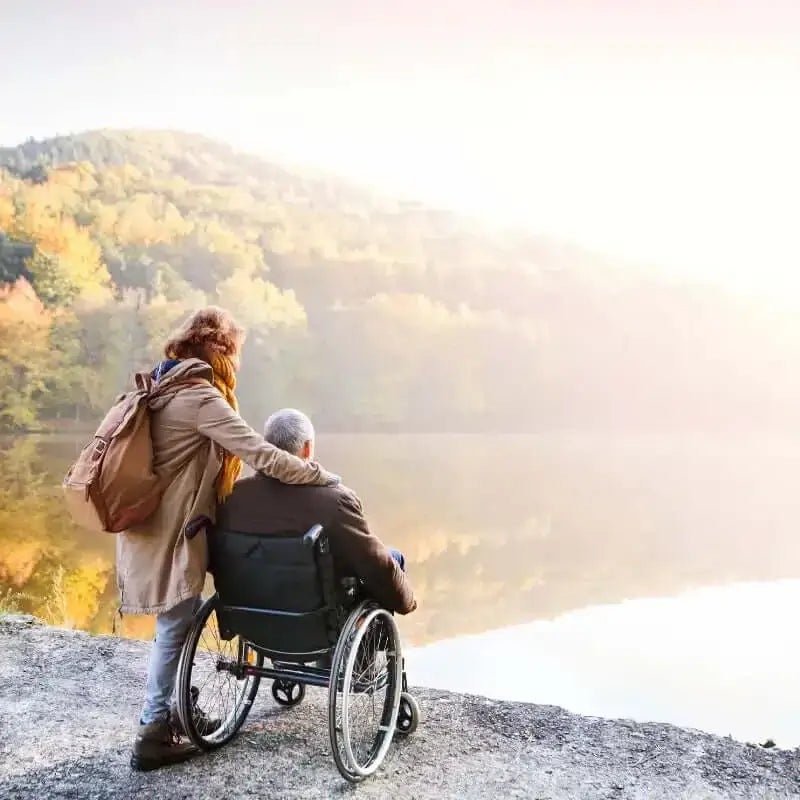Americans With Disabilities Act (ADA) Wheelchair Ramp Requirements: What You Need to Know
Are you shopping for a ramp for your wheelchair or mobility equipment? One of the most common questions is whether the ramp needs to comply with the Americans with Disabilities Act (ADA) and, if so, what that entails. Another key question is: What specific measurements does the ramp need to meet your threshold requirements?
This guide provides an overview of essential ADA requirements for wheelchair ramps, offering answers to common questions and practical advice. While ADA compliance isn’t mandatory for private residential ramps, incorporating these standards can enhance safety, accessibility, and even your home's value.

Table of Contents
Key ADA Wheelchair Ramp Standards
- Slope: Maximum slope ratio is 1:12 (1 inch of rise for every 12 inches of ramp length).
- Width: Minimum clear width is 36 inches.
- Surface: Must be slip-resistant and stable.
- Landings: A 5' x 5' level landing is required at the top and bottom.
Even though these requirements don’t apply to private homes, following them ensures your ramp is user-friendly and safe for everyone.
Why Do ADA Requirements Matter?
ADA wheelchair ramp requirements are critical to ensuring equal access for individuals with disabilities. These regulations are designed to remove barriers, allowing people to safely and independently enter and exit buildings.
Key Benefits:
- Accessibility: Ensures usability for people with mobility aids, including wheelchairs, walkers, or canes.
- Safety: Reduces the risk of accidents by regulating ramp slope, width, surface, and handrails.
- Legal Compliance: Building owners must meet ADA standards to avoid fines or legal penalties.
By following ADA guidelines, you’re contributing to a safer, more inclusive environment while meeting federal legal standards.
What Are the ADA Wheelchair Ramp Requirements?
Ramp Runs
- Maximum Slope: 1:12 (1 inch of rise for every 12 inches of run). For example, a 6-inch rise requires a 6-foot ramp.
- Maximum Run Length: 30 feet before requiring a landing platform.
-
Exceptions:
- Slopes can be steeper for short thresholds:
- 1:10 for rises under 6 inches.
- 1:8 for rises under 3 inches.

Landing Requirements
- Top and Bottom Landings: Must be level and at least 5' x 5'.
- Directional Changes: Intermediate landings for ramps with turns must measure at least 60" x 60".
- Surface: Landings must be hard and slip-resistant to ensure safe navigation, especially in outdoor conditions.
Ramp Width
When designing a wheelchair ramp, ramp width is a crucial consideration for safety and usability. The minimum clear width for an ADA-compliant ramp is 36 inches, measured between the inner edges of the handrails. This width provides adequate space for most mobility aids, such as wheelchairs, walkers, and canes, allowing users to navigate the ramp with ease. For commercial spaces or bariatric needs, a 48-inch width is highly recommended. The additional space accommodates larger mobility equipment and ensures a smoother experience for individuals requiring extra clearance. Whether you're building a ramp for private or public use, choosing the right width helps create a safer, more inclusive environment for everyone.

Handrails
Handrails are a critical component of wheelchair ramps, ensuring stability and safety for users. ADA guidelines provide specific requirements for their placement, dimensions, and functionality.
Standard Handrail Requirements
- Height: Handrails must be between 34 and 38 inches from the ramp surface.
- Extensions: Minimum 12-inch extensions are required at the top and bottom of the ramp. These extensions provide extra support for users entering or exiting the ramp.
- Clearance: Handrails must have at least 1.5 inches of space between the handrail and the adjacent wall or surface to allow proper gripping.
- Continuity: Handrails must be continuous along the ramp to provide uninterrupted support.
Handrails for Modular or Temporary Ramps
For ramps designed to be assembled and disassembled frequently—such as portable or modular ramps—handrails often include connector pieces. These allow the handrails to maintain continuity throughout the ramp while still being easily attached and detached. Connector pieces ensure that the ramp meets ADA standards for safety without sacrificing the flexibility of the modular design.
Residential Ramp Slope Considerations
While the ADA’s 1:12 slope ratio is considered the gold standard for wheelchair ramps, residential ramps don’t necessarily have to follow this guideline. Many homeowners opt for slightly steeper slopes, especially when space is limited, or for portable ramps that are used temporarily.
- Portable Ramps: These often have a slope closer to 2:12 (1 inch of rise for every 6 inches of run). While this is steeper than ADA standards, it’s generally acceptable for short-term use, provided the ramp is safe and stable.
- Safety First: Whenever possible, adhere to the 1:12 slope for maximum safety and ease of use. A gentler incline reduces the physical effort required to navigate the ramp and minimizes the risk of accidents.
- Evaluate Your Needs: Consider the user’s mobility equipment, strength, and the ramp’s intended use when determining the slope.
If you’d like to learn more about determining the best slope for your ramp, check out the Reliable Ramps blog, "What Degree Should a Wheelchair Ramp Be?" for expert advice on choosing the right incline for your situation.

Benefits of an ADA-Compliant Wheelchair Ramp
1. Enhanced Accessibility
ADA-compliant ramps ensure smooth access for individuals using wheelchairs, walkers, or other mobility aids. These ramps also benefit families with strollers or luggage, making public and private spaces more welcoming.
2. Improved Safety
With a gradual slope, slip-resistant surfaces, and required handrails, ADA-compliant ramps minimize the risk of falls or accidents.
3. Legal Protection
Meeting ADA standards helps commercial property owners comply with federal laws, avoiding potential fines and liability issues.
4. Greater Convenience
Ramps provide an alternative to stairs, making access easier for everyone.
5. Aesthetic Appeal
A thoughtfully designed ramp can blend seamlessly with your building's architecture, enhancing curb appeal and overall design.
Why Consider ADA Standards for Residential Ramps?
Although ADA requirements don’t apply to private homes, incorporating these features can:
- Improve usability for aging or disabled family members.
- Increase your home’s resale value by ensuring it is accessible.
- Promote safety for all users, especially in outdoor or wet conditions.
Conclusion: Your Path to Safer, More Accessible Spaces
Understanding ADA wheelchair ramp requirements is essential for creating safe, functional, and inclusive environments. Whether you're planning a residential ramp or managing a commercial property, adhering to these standards ensures accessibility, reduces safety risks, and promotes usability for everyone.
Even if ADA compliance isn’t legally required for your home, adopting these guidelines can significantly enhance the ramp’s safety and convenience. By prioritizing a gentle slope, stable surfaces, and well-designed landings, you’ll create a ramp that meets both functional needs and aesthetic preferences.
Let Us Know What You Think!
Your thoughts and questions are incredibly valuable to us, and we'd love to hear from you. If you have additional insights to share, your comments can spark meaningful discussions and enhance the collective knowledge of our community. Don't hesitate to ask any questions you may have; our team is here to provide answers and engage with you. So, please, take a moment to leave a comment or question below. Your input is much appreciated!







Leave a comment